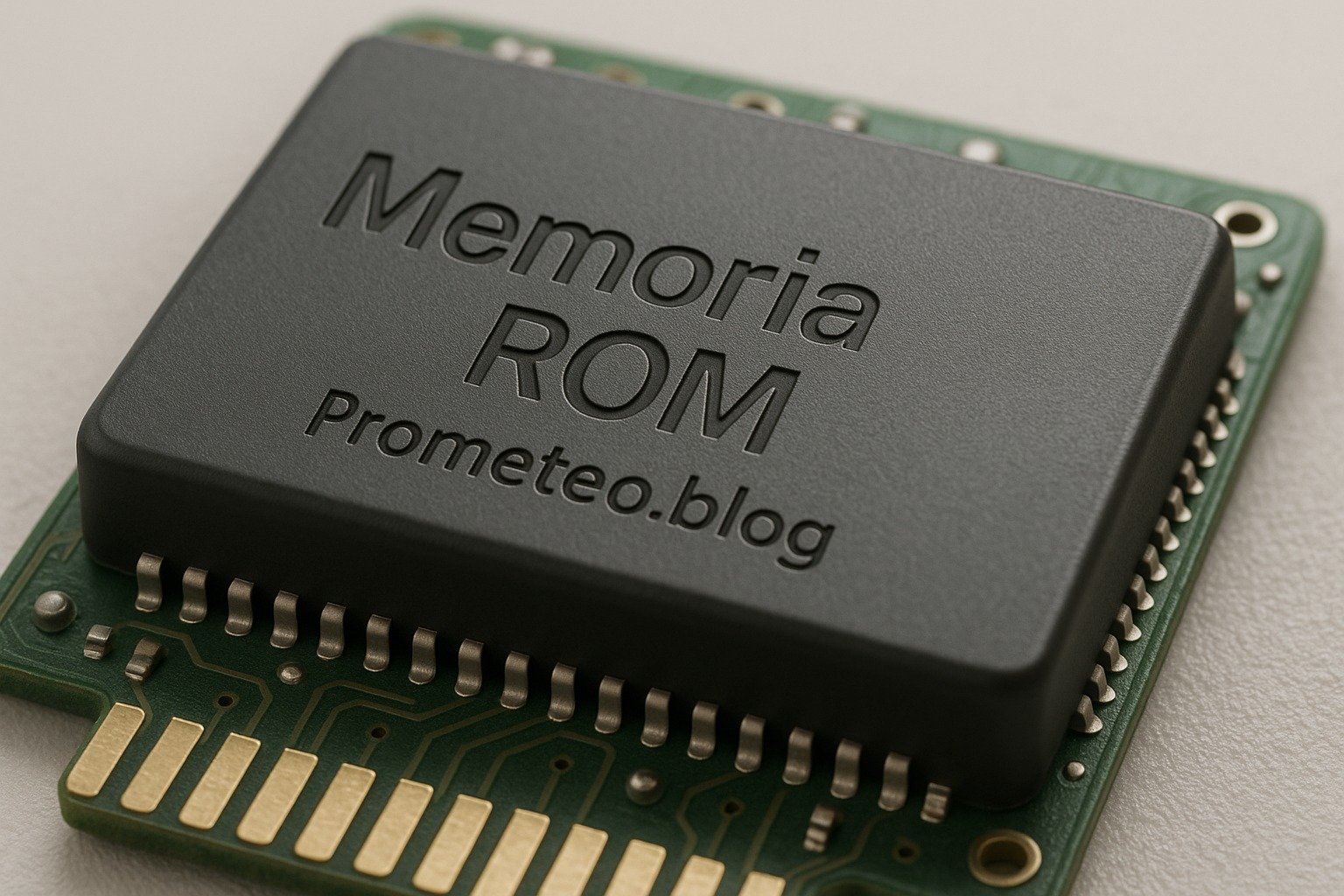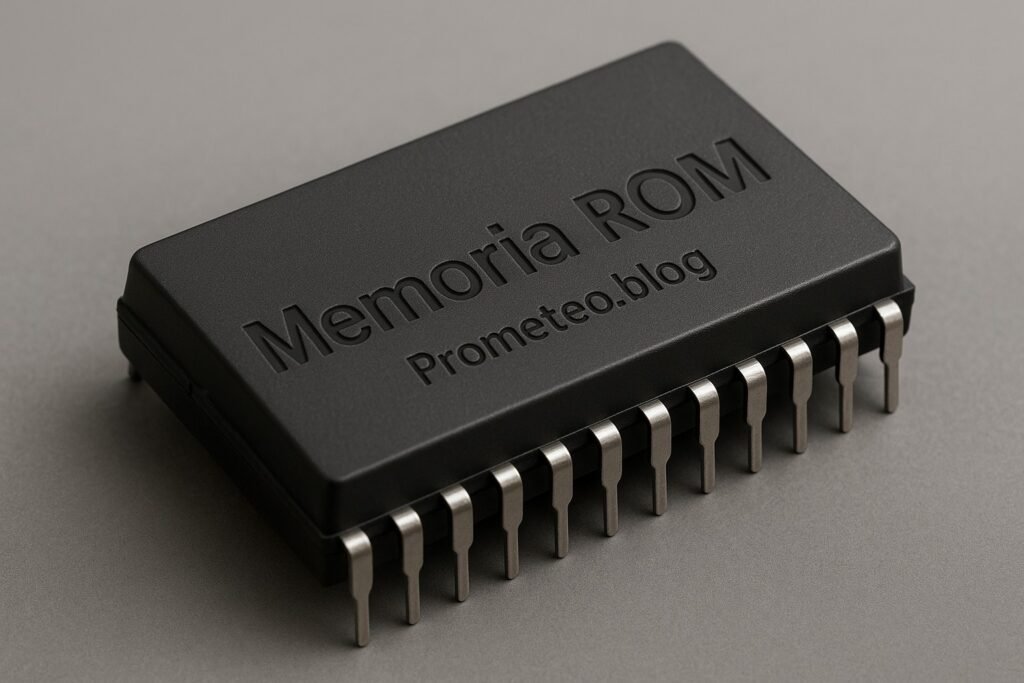Introduction
Back in my early days as an electronics student, I often wondered how devices retained information even when powered off. That’s when I learned about ROM, or Read-Only Memory. It’s fascinating how this technology forms the backbone of many electronic devices we use daily. In this tutorial, we will explore the fundamentals of ROM, how it works, its applications, advantages and disadvantages, a concrete use case, and some common mistakes to avoid. By the end, you will have a comprehensive understanding of ROM and its significance in the world of electronics.
What it’s used for and how it works
ROM, which stands for Read-Only Memory, is a type of non-volatile storage that is crucial in the world of electronics. Non-volatile means that it retains its data even when the power is turned off, which makes it invaluable for storing firmware, system software, and other crucial data that must not be lost. You will find ROM in various applications, including computers, game consoles, embedded systems, and much more.
How ROM Works
Understanding how ROM works requires a brief look at its structure and operation. Unlike RAM (Random Access Memory), which allows for both read and write operations, ROM is primarily designed for reading data. The data in ROM is written during the manufacturing process, and once written, it cannot be modified (or can be modified only with difficulty).
Types of ROM
There are several types of ROM, each with its own characteristics and uses:
-
Mask ROM: This is the oldest form of ROM. It is programmed during the manufacturing process, meaning that once it is created, the data is fixed. Mask ROM is often used in applications where the data does not need to be updated.
-
PROM (Programmable ROM): This type can be programmed once after manufacturing. You can think of it as a blank slate that you can write data onto, but once it is written, it cannot be altered.
-
EPROM (Erasable Programmable ROM): EPROM allows you to erase the data with UV light and then reprogram it. This feature makes it more flexible than PROM.
-
EEPROM (Electrically Erasable Programmable ROM): This is similar to EPROM, but it can be erased and rewritten using electrical signals. EEPROM is commonly used in applications that require frequent updates, such as BIOS chips in computers.
-
Flash Memory: A modern form of EEPROM that allows for faster read and write operations and can be erased and rewritten in blocks rather than one byte at a time. Flash memory is widely used in USB drives and SSDs.
Applications of ROM
ROM is used in various devices and applications:
-
Firmware Storage: Most embedded systems rely on ROM to store their firmware, which is the software that provides low-level control for the device’s hardware.
-
Boot Processes: Computers and other devices often use ROM to store the initial code that runs when the device is powered on. This code initiates the boot process, loading the operating system.
-
Game Consoles: Older game consoles often utilized ROM cartridges to store game data. Each cartridge contained ROM chips that held the game code.
-
Consumer Electronics: Many household appliances, such as microwaves and washing machines, use ROM to store control programs and settings.
-
Automotive Systems: Modern vehicles use ROM in engine control units (ECUs) to store critical operating parameters.
Advantages of ROM
You might wonder why ROM is still so widely used. There are several advantages:
-
Data Integrity: Since the data is non-volatile, it remains intact even without power.
-
Security: The data in ROM is difficult to alter, which makes it a secure choice for storing critical firmware.
-
Cost-Effective: For applications where data does not need to change frequently, ROM can be a cost-effective solution compared to other types of memory.
-
Reliability: ROM is generally more reliable than RAM, as it does not wear out over time with read/write cycles.
Disadvantages of ROM
However, ROM is not without its drawbacks:
-
Inflexibility: Once data is written, it cannot be changed easily, which limits its use in applications requiring frequent updates.
-
Limited Capacity: Compared to other storage options like hard drives or flash memory, ROM typically has lower storage capacities.
Conclusion on How ROM Works
In summary, ROM is an essential component in many electronic systems, providing a stable and reliable means of storing critical data. Its non-volatile nature ensures that important information remains accessible even when power is lost, making it a foundational technology in electronics.
Key Parameters
When working with ROM, it’s important to understand its key parameters, which can influence its performance and suitability for specific applications:
-
Storage Capacity: This indicates how much data can be stored in the ROM. Depending on the application, you may choose ROM with varying capacities.
-
Read Speed: This is the time it takes to read data from ROM, which can affect the overall performance of the system.
-
Write Speed: While traditional ROMs do not allow for writing, EEPROM and Flash memory do, and their write speeds are important for applications needing updates.
-
Erase Cycle: This is relevant for erasable ROM types, indicating how many times the data can be erased and rewritten.
-
Endurance: This measures the lifespan of the memory type, particularly for EEPROM and Flash, indicating how many write/erase cycles the memory can endure before failure.
Concrete Use Case
To illustrate the practical application of ROM, let’s consider a common use case: the BIOS of a computer system. BIOS, or Basic Input/Output System, is firmware stored on a ROM chip on the motherboard. Here’s how it works:
What is BIOS?
The BIOS is the first software that runs when you power on your computer. Its primary role is to initialize and test hardware components, such as the CPU, RAM, and storage devices, before handing control over to the operating system. Since this process needs to occur every time the computer starts, the BIOS must be stored in a non-volatile memory like ROM.
The Role of ROM in BIOS
-
Initialization: When you turn on your computer, the BIOS performs a Power-On Self-Test (POST) to check if all hardware components are functioning correctly. This process is stored in ROM, ensuring it runs every time you power on the device.
-
Boot Sequence: After POST, the BIOS identifies the bootable devices (like hard drives, SSDs, or USB drives) and loads the operating system from the selected device. This boot sequence is hard-coded in ROM, ensuring consistency across all boot cycles.
-
Configuration Settings: The BIOS also allows users to configure hardware settings, such as boot order, system time, and hardware configurations. These settings are stored in EEPROM, a type of ROM that can be updated without replacing the chip.
-
Firmware Updates: While the core BIOS code is read-only and cannot be altered, manufacturers occasionally release updates to fix bugs or improve performance. Users can apply these updates, which are often stored in a secondary area of the ROM.
Impact on Performance
Because the BIOS is stored in ROM, it can be accessed very quickly during the boot process. This speed is crucial for ensuring that the computer starts up efficiently. Furthermore, the reliability of ROM ensures that the BIOS can always be accessed even if the computer loses power.
Challenges and Solutions
While ROM is beneficial, there are challenges as well. For example, if a BIOS chip becomes corrupted, the system may fail to boot. However, many modern motherboards have a backup BIOS stored in a separate ROM chip to mitigate this risk. Additionally, some systems allow for BIOS recovery methods, ensuring that even if a problem arises, users can restore the system.
Conclusion of the Use Case
Overall, the use of ROM in BIOS exemplifies how this technology is integral to the functioning of computers. It ensures that the essential instructions for starting up the system are always available and reliable.
Common Mistakes and How to Avoid Them
Here are some common mistakes people make when working with ROM and how to avoid them:
-
Assuming all ROM is the same: Different types of ROM have varying characteristics. Make sure to choose the right type for your application.
-
Neglecting to update firmware: While ROM is read-only, firmware updates are important for performance and security. Always check for updates from manufacturers.
-
Overlooking erase cycles: For EEPROM and Flash memory, forgetting about their limited erase cycles can lead to premature failure. Monitor usage and plan for replacements.
-
Not understanding read speeds: If you need fast access times, ensure you choose a ROM type that meets your speed requirements.
-
Ignoring backup options: In critical applications, always have a backup plan if the ROM data becomes corrupted or inaccessible.
Conclusion
In conclusion, ROM is a fundamental component in modern electronics, providing secure, reliable, and consistent storage for critical data. Understanding its operation, applications, and limitations is essential for anyone working in electronics. If you want to delve deeper into the fascinating world of electronics and computer engineering, consider exploring more resources and tutorials.
More information at electronicsengineering.blog
Third-party readings
- Configuración de la memoria del microcontrolador 8051
- Capítulo 26: Memoria ROM – Obijuan/open-fpga-verilog-tutorial GitHub Wiki
- Capítulo 30: Hacia el microprocesador y más allá – Obijuan/open-fpga-verilog-tutorial GitHub Wiki
Find this product and/or books on this topic on Amazon
As an Amazon Associate, I earn from qualifying purchases. If you buy through this link, you help keep this project running.
Quick Quiz




